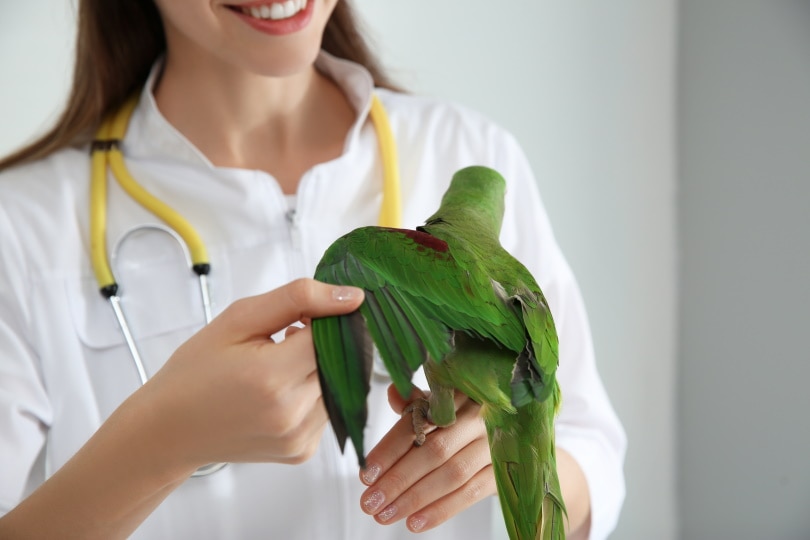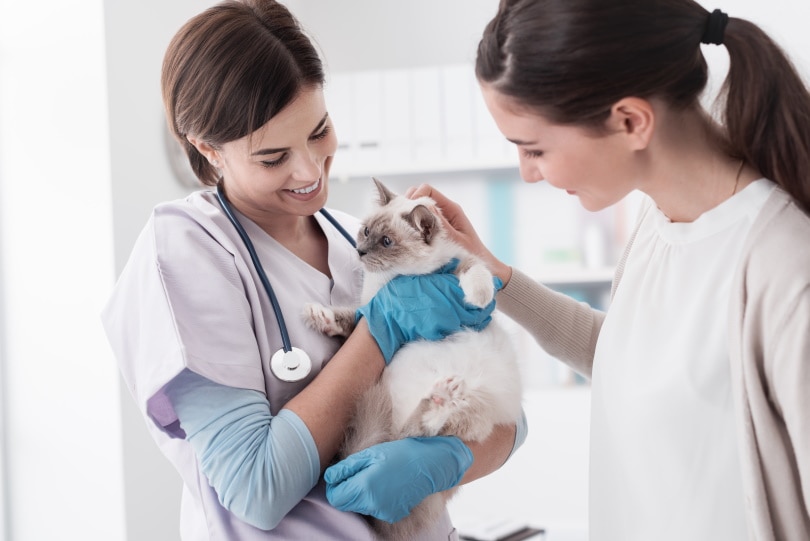
Pet insurance is growing in popularity, and for good reason. The cost of veterinary care can be expensive. According to the American Pet Products Association,1 in 2021, pet owners in the United States spent 34.3 billion dollars on veterinary-related care and products. However, they spent much more in 2022.2 On average, the monthly cost of pet insurance is $53.54 for dogs and $32.25 for cats.
This leaves a lot of pet owners feeling uneasy about unexpected healthcare costs that could pop up at any given time, and that’s where pet insurance comes in. So, how much does pet insurance cost, and is it worth it? We’ll break it down for you.
The Importance of Pet Insurance
Pet insurance works in the same way as other insurance policies. You pay a premium in place of not having to pay for your pet’s medical expenses. Several companies offer different types of coverage. Most pet owners opt for pet insurance to offset unexpected medical costs that can be incredibly expensive. According to a recent survey,3 commissioned by pet insurance company Lemonade, 42% of respondents have gone into debt due to emergency vet costs.
On top of that, the survey found that 63% of pet owners “often or always” go over budget on pet spending, partly because they consistently underestimate the cost of procedures like dental cleaning, cancer treatment, and surgery. With veterinary costs already expensive and rising due to advancements in veterinary technology, pet insurance can be a great safety net to keep you from being caught in a very difficult financial situation. In addition to coverage for accidents, injuries, and illness, some policies also help with routine and preventative care.

How Much Does Pet Insurance Cost?
Pet insurance policies are going to vary greatly depending on several factors. It is highly recommended that when searching for pet insurance, you reach out to different providers and discuss their plans and pricing so that you make the best decision for you and your pet.
Top Rated Pet Insurance Companies:
Prices will vary depending on the following:
Insurance Company
Many insurance providers offer pet insurance policies. Some companies focus on pet insurance only, while others may cover various insurance options. It’s recommended to research each company and compare their plans and pricing to the others so you can have the full scope of knowledge for each one. This will help you in your decision-making.
Policy/Plan Type
Each company has various plans with different levels of coverage and deductibles. Pet insurance operates by reimbursement, where you cover the cost upfront and then submit a claim. The insurance company will then reimburse you for any costs that fall within your plan’s eligibility.
Species
Pet insurance costs will be dependent on which type of pet you have. Most companies offer coverage for cats and dogs, with cats typically costing less each month in comparison to dogs. For coverage of other pets, such as birds and exotics, policies are much more limited and currently offered by Nationwide only.

Breed/Size
Not only does the species matter, but so does the breed and size of the pet. Some breeds are more prone to severe health ailments, and insurance companies consider that when developing their rates. Larger animals and those predisposed to various health conditions will cost a little more.
Age
The pet’s age will also play a vital role in determining your costs for pet insurance. More health problems tend to appear during the senior years, which typically results in a higher premium for older pets.
Geographical Location
Your location will also play a role in the overall costs. Insurance policies vary in cost from sea to shining sea. The cost of living varies depending on the geographical location and whether you are in a rural or urban setting. When obtaining a quote, you’ll be asked to enter your zip code so the provider can give you the precise rate for your specific location.
No matter where you live, good healthcare for your pet can get expensive. You may want to consider a pet insurance company like Lemonade to help you manage the costs.

Price Tables
The following tables represent the average monthly cost of insurance for dogs and cats, respectively, with $5,000 of annual coverage and a $250 deductible from a list of eight providers:
| Insurance Provider | National Average Cost Per Month for a Dog |
| Lemonade | $28 |
| Pets Best | $20 |
| Figo | $26 |
| TrustedPals | $32 |
| Fetch by the Dodo | $35 |
| Embrace | $58 |
| ASPCA | $33 |
| Spot | $28 |
| Average | $32.5 |
| Insurance Provider | National Average Cost Per Month for a Cat |
| Lemonade | $18 |
| Pets Best | $12 |
| Figo | $14 |
| TrustedPals | $25 |
| Fetch by the Dodo | $20 |
| Embrace | $33 |
| ASPCA | $17 |
| Spot | $14 |
| Average | $18.6 |
Common Coverage Options
Coverage options and plans will vary by company, but the following are the most common types of pet insurance coverage options:
Accident and Illness Coverage
This type of coverage encompasses veterinary care related to both illnesses and accidents. This is the most common coverage option; it reimburses the high costs associated with sickness or any injuries resulting from an accident.
Accident-Only Coverage
Accident-only coverage will cover the costs of medical care associated with unexpected accidents and sustained injuries. This can include broken bones, torn ligaments, bite wounds, lacerations, and poisoning. Accident-only coverage typically involves coverage for:

Wellness Coverage (Add-On)
Wellness plans are offered as an add-on to other policies at an additional cost. This type of add-on can be very beneficial, as cats and dogs require semi-annual or annual exams, yearly vaccinations, and upkeep on the prevention of parasites. Dental care is another add-on to check into with each provider since dental care can get quite expensive as well.
Deductible Costs
Just like any other insurance policy, pet insurance involves a deductible. An annual pet insurance deductible is the fixed amount that the pet owner is required to pay before the insurance provider will reimburse any costs. Pet insurance deductibles will range anywhere from $100 to $1,000. The higher deductible that is chosen when selecting coverage, the lower the monthly cost and vice versa.
Annual Limits
Most pet insurance policies will come with an annual limit. This means the provider will only reimburse you up to the annual limit amount. The annual limit can vary depending on the policy and the provider but typically falls within the $5,000 to $10,000 range. Make sure to check on the annual limit when shopping around, as you don’t want to be surprised if you have a particularly bad year in terms of veterinary costs and you fall short of getting your money back.

Potential Discounts
When you are shopping for pet insurance, be sure to check and see if your chosen provider offers any discounts. Some companies offer military discounts, AAA discounts, and even discounts to pet parents who have adopted from a shelter. In addition, there may be discounts associated with service and therapy animals.
Reimbursement
Pet insurance policies work differently than your own health insurance. This is very important for pet owners to be aware of when purchasing a policy. In addition to paying the agreed-upon deductible amount, you will need to pay the veterinary care costs upfront.
When selecting a plan, providers will give an option for reimbursement percentage. The lower the rate, the lower the monthly premium, but you will pay more expenses out of pocket. Reimbursement rates typically range between 70% and 90%, depending on the provider.
After you have paid the bills associated with your pet’s care, you will submit a claim to the insurance provider, and they will reimburse you for the costs that fall within your plan’s coverage. Reimbursement generally comes in the form of a check or direct deposit once the deductible has been met.

What Does Pet Insurance Not Cover?
Currently, no pet insurance company offers coverage for pre-existing conditions or an illness that existed before enrollment. In addition, anything that occurs during the waiting period before the beginning of coverage will also not be covered. Most companies have a 14-day waiting period after enrollment, which can vary, so it’s essential to check with each company.
Outside of preexisting conditions and anything that falls within the waiting period for coverage, here’s a list of other expenses that do not fall within the scope of pet insurance coverage:

Final Thoughts
Pet insurance is a growing industry that can be very helpful when unforeseen circumstances arise. Several pet insurance companies operate in the United States, and the costs vary greatly depending on many factors. If you’re ready to get a policy started or are curious to learn more, be sure to shop around for the best rates.
See also:
Featured Image Credit: Rawpixel.com, Shutterstock







